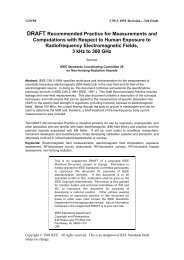An introduction to the quark model
An introduction to the quark model
An introduction to the quark model
You also want an ePaper? Increase the reach of your titles
YUMPU automatically turns print PDFs into web optimized ePapers that Google loves.
Few-charge systems His<strong>to</strong>ry of <strong>the</strong> <strong>quark</strong> <strong>model</strong> Mesons Baryons Multi<strong>quark</strong>s and o<strong>the</strong>r exotics Outlook<br />
Chromoelectric binding: equal masses<br />
<br />
State Pair 12 34 13 24 14 23 ¯g ∆g<br />
Threshold 0 0 1 1 0 0 1/3 0.22<br />
Ps2 −1 −1 1 1 −1 −1 1/3 0.89<br />
T 1/2 1/2 1/4 1/4 1/4 1/4 1/3 0.01<br />
M −1/4 −1/4 5/8 5/8 5/8 5/8 1/3 0.17<br />
Ps2 is more asymmetric than its threshold: it is stable<br />
Both T-type and M-type of tetra<strong>quark</strong>s are less symmetric than<br />
<strong>the</strong>ir threshold, <strong>the</strong>y are unstable<br />
Hence tetra<strong>quark</strong> with equal masses is penalised by <strong>the</strong><br />
non-Abelian character of <strong>the</strong> <strong>the</strong>ory<br />
JMR Quark Model

















